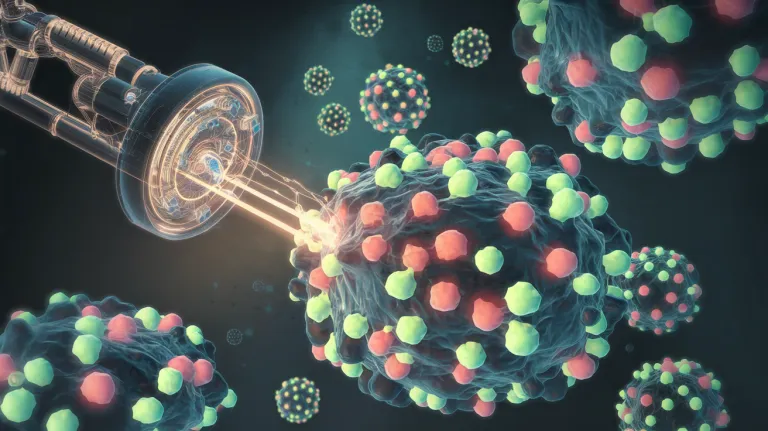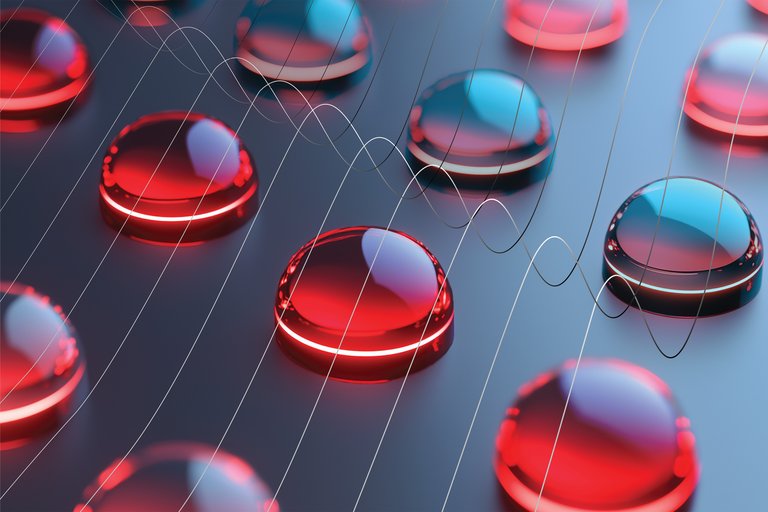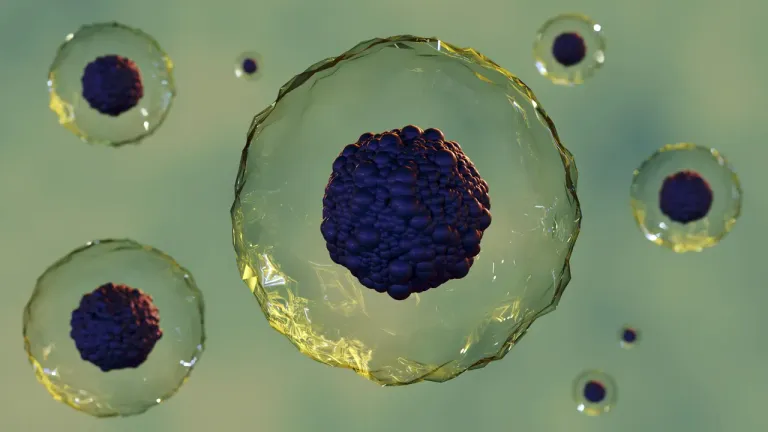Source

As you can imagine, studying the behaviour of organisms that are a few thousandths of a millimetre in size is an extremely complex task. Until now, biosensing was mainly carried out through methods that involved more direct physical contact with cells or tissues, such as the implantation of electrodes, in order to understand their functioning.
Como podéis suponer, estudiar el comportamiento de organismos con un tamaño de milésimas de milímetro es una tarea extremadamente compleja. Hasta ahora la biodetección se realizaba principalmente a través de métodos que involucraban un contacto físico más directo con las células o tejidos, como la implantación de electrodos, para comprender su funcionamiento.
Now, a group of MIT researchers has developed an innovative light biosensor that can record electrical signals in cells without the need for wires or any other type of physical contact. Unlike traditional methods that use wires, these new sensors employ tiny antennas that capture electrical signals and convert them into changes in light.
Ahora un grupo de investigadores del MIT han desarrollado un innovador biosensor lumínico que permite registrar señales eléctricas en células sin necesidad de cables, ni otro tipo de contacto físico. A diferencia de los métodos tradicionales que emplean cables, estos nuevos sensores emplean antenas diminutas que captan las señales eléctricas y las convierten en cambios de luz.
Source

The device uses tiny antennas called OCEAN (Organic Conductive Electrodispersive Antennas), made from the polymer PEDOT:PSS. These antennas detect electrical changes in their environment by changing their refractive index, which affects how they scatter light. By shining light on the antennas, variations in light intensity can be measured, reflecting electrical activity in the medium.
El dispositivo utiliza antenas diminutas llamadas OCEAN (“Organic Conductive Electrodispersive Antennas”), fabricadas con el polímero PEDOT:PSS. Estas antenas detectan cambios eléctricos en su entorno al modificar su índice de refracción, lo que afecta cómo dispersan la luz. Al iluminar las antenas, se pueden medir variaciones en la intensidad de la luz, reflejando la actividad eléctrica en el medio.
Each antenna is approximately 1 micrometer wide, allowing thousands of data points to be recorded simultaneously with high spatial resolution. In addition, the antennas are robust enough to operate for more than 10 continuous hours, expanding the possibilities for studying cellular biology.
Cada antena mide aproximadamente 1 micrómetro de ancho, permitiendo registrar simultáneamente miles de puntos de información con alta resolución espacial. Además, las antenas son lo suficientemente robustas para funcionar durante más de 10 horas continuas, lo que amplía las posibilidades para el estudio de la biología celular.
Source

With this technology, by eliminating the need for cables, more data points can be recorded simultaneously, allowing for a more complete picture of cellular activity. The wireless nature of these sensors reduces the risk of damaging the cells or tissues being studied and offers high temporal and spatial resolution, allowing for the detection of very rapid and localized changes in electrical activity.
Con esta tecnología, al eliminar la necesidad de cables, se pueden registrar más puntos de datos simultáneamente, lo que permite obtener una imagen más completa de la actividad celular. La naturaleza inalámbrica de estos sensores reduce el riesgo de dañar las células o tejidos que se están estudiando y ofrecen una alta resolución temporal y espacial, lo que permite detectar cambios muy rápidos y localizados en la actividad eléctrica.
This technology opens up a world of possibilities for biological research by allowing us to observe cellular processes in greater detail and precision. Light biosensors could lead to new discoveries in areas such as neuroscience and regenerative medicine, as well as applications in the development of new treatments and therapies.
Esta tecnología abre un mundo de posibilidades para la investigación biológica al permitirnos observar los procesos celulares con mayor detalle y precisión, los biosensores lumínicos podrían conducir a nuevos descubrimientos en áreas como la neurociencia y la medicina regenerativa, además de podrían aplicaciones en el desarrollo de nuevos tratamientos y terapias.
More information/Más información
https://news.mit.edu/2024/tiny-wireless-antennas-use-light-monitor-cellular-communication-1220
Congratulations @mauromar! You have completed the following achievement on the Hive blockchain And have been rewarded with New badge(s)
<table><tr><td><img src="https://images.hive.blog/60x60/https://hivebuzz.me/badges/postallweek.png" /><td>You have been a buzzy bee and published a post every day of the week. <p dir="auto"><sub><em>You can view your badges on <a href="https://hivebuzz.me/@mauromar" target="_blank" rel="noreferrer noopener" title="This link will take you away from hive.blog" class="external_link">your board and compare yourself to others in the <a href="https://hivebuzz.me/ranking" target="_blank" rel="noreferrer noopener" title="This link will take you away from hive.blog" class="external_link">Ranking<br /> <sub><em>If you no longer want to receive notifications, reply to this comment with the word <code>STOP <p dir="auto"><strong>Check out our last posts: <table><tr><td><a href="/hive-122221/@hivebuzz/pud-202501"><img src="https://images.hive.blog/64x128/https://i.imgur.com/805FIIt.jpg" /><td><a href="/hive-122221/@hivebuzz/pud-202501">Hive Power Up Day - January 1st 2025<tr><td><a href="/hive-139531/@hivebuzz/proposal-2526"><img src="https://images.hive.blog/64x128/https://files.peakd.com/file/peakd-hive/hivebuzz/EogLPkRSg5NYTkFS9Ag4b5zuvMUBFz3bMuAZLgyMVNx5BpuhTFkxzoYzEKV5yVSqZ6t.png" /><td><a href="/hive-139531/@hivebuzz/proposal-2526">The Hive Gamification Proposal - RenewalThis could be good to discover reason of some sickness and how to treat them